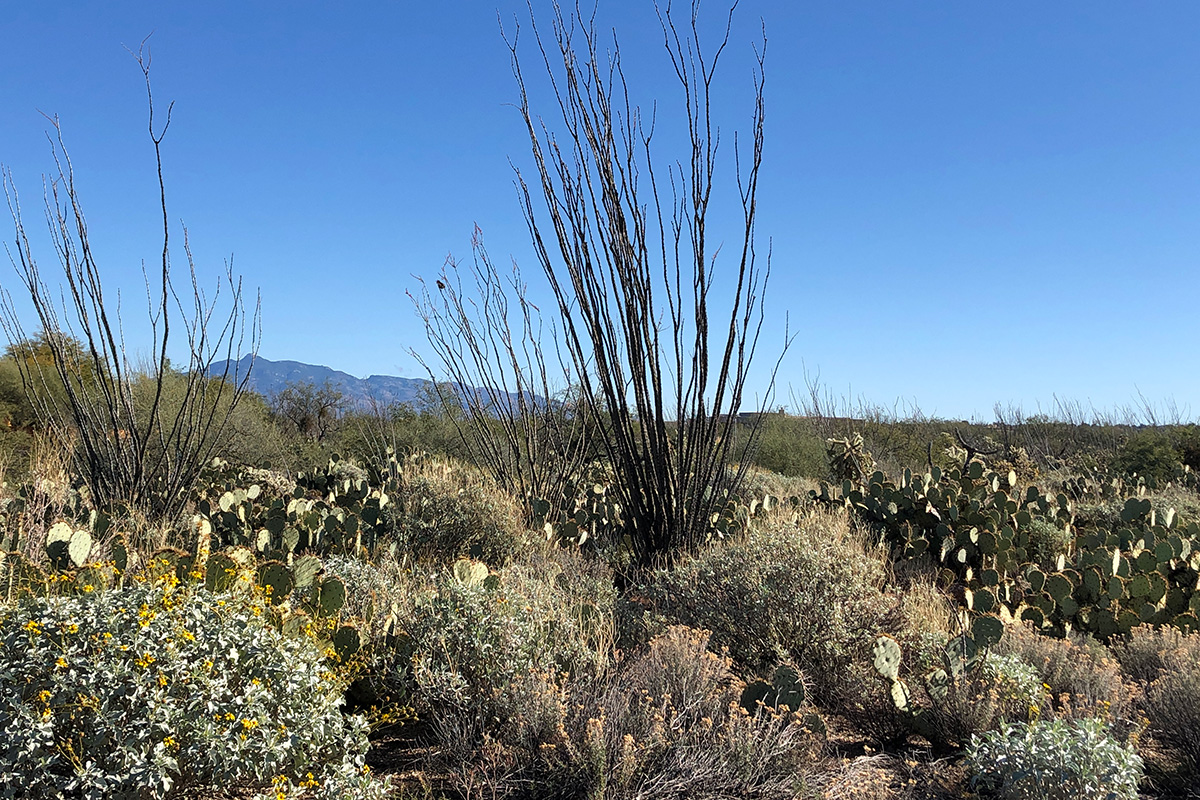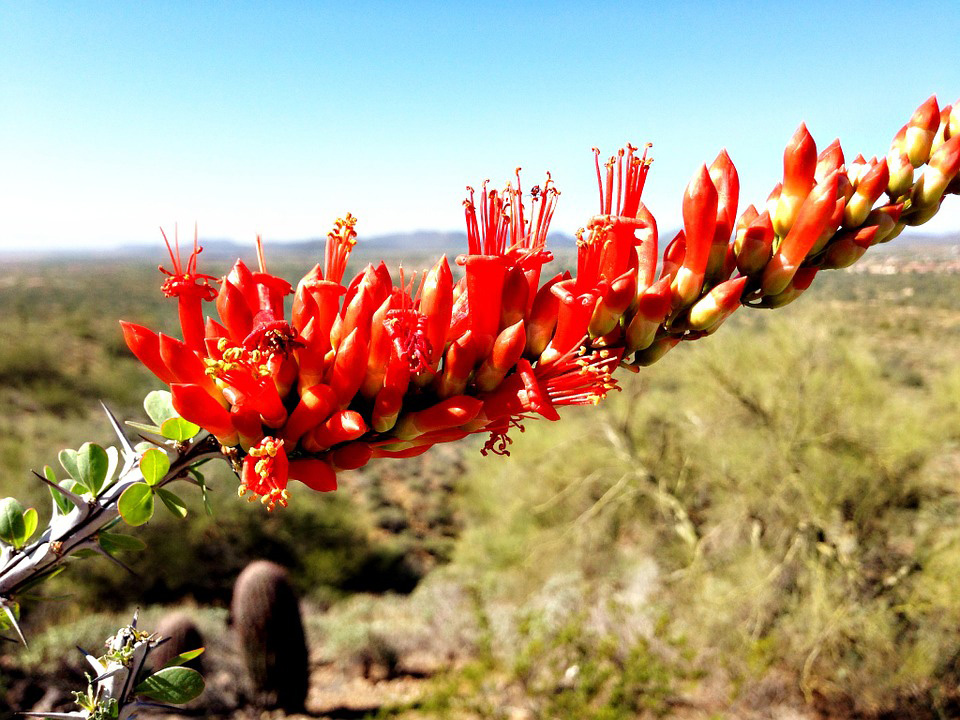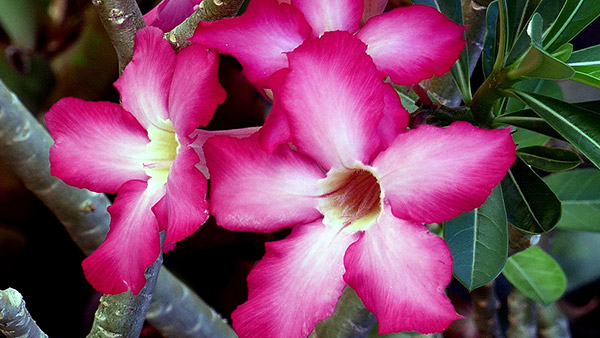
Ocotillo (Fouquieria splendens, Zones 7–11) is an unusually beautiful desert gem. This succulent shrub, often misidentified as a cactus, is impossible to miss when you are traveling through the desert. Typically, ocotillos can be spotted along roadways; they also love to grow on hilltops. On a recent cave tour, I discovered that a hill covered in ocotillos can indicate a cave below, typically made of limestone. Because of this, cavers call ocotillos “indicator plants.”
A rare native
Ocotillos are referred to by several other names, including candlewood, coachwhip, and flaming sword. Although native to our area, specifically the Sonoran and Chihuahuan desert regions, they can be difficult to come by. Ocotillos are protected, which means that it is illegal to harvest them from the desert. Local nurseries will sometimes sell ocotillos that were salvaged from construction sites, and you may find some for sale online.

Impressive size and color
Ocotillos can grow up to 20 feet tall in the wild, but cultivated ocotillos will likely stay more compact at 10 feet tall. They require full sun and thrive in well-drained soil. During spring and summer, they may be covered in small green leaves if provided with enough moisture from the monsoons and/or supplemental irrigation. It may take a year or more for an ocotillo to leaf out or to show any signs of growth. The most beautiful feature of this plant is the blooms it produces in late spring to early summer. These blooms are bright red or orange tubelike flowers that grow in clusters at the end of the stems. They create a gorgeous contrast against the bright green leaves running up and down the canes.

Transplanting is a delicate art
Perfect for xeriscape gardens, ocotillos not only add height and color to gardens, but they are super drought tolerant once established. Their drought tolerance allows them to go for long periods of time with little to no moisture. Although they can be planted in containers, they will not grow to their true potential. Ocotillos can be transplanted year-round, but the ideal time is March through May. Be sure to transplant to the same growing depth and orientation—that is, plant the ocotillo in its new location facing the same direction that it was facing previously. Also, dig a hole as deep as the root system, but no deeper. The south side of the plant will always be more heat resistant, which helps prevent it from burning when replanted. I have come by this proven technique through many failures. Another trick I’ve learned is that after digging the hole, you can fill it with water and watch it drain. If it takes less than an hour to drain, it’s perfect for your ocotillo.

Steady irrigation till establishment
Irrigating your ocotillo after transplant should be done with caution. If you overwater your ocotillo, like all succulents it will die. You water once a week during the summer and every other week during the winter. If Mother Nature gifts you with some free irrigation, then skip your watering. Once the ocotillo is established, meaning that it’s leafing out, then you can cut back your watering schedule. Remember, this can take a year or more. In the winter months, once it is established, you should not need to water your ocotillo at all. In the summer, water it once every 3 to 4 weeks after establishment.
I definitely encourage you to think outside the box a bit and find a sunny, open space in your landscape for an ocotillo. Although it can look a bit barren during a good part of the year (as it is drought deciduous), when it leafs out and blooms, you will be so glad you waited for the show. It is truly an amazing succulent that will provide enjoyment for decades to come.
—Laurel Startzel is an interior designer and container garden designer. She is a former co-owner of Denver Dirty Girls, a container gardening business, and lives in Tucson, Arizona.


















Comments
Log in or create an account to post a comment.
Sign up Log in